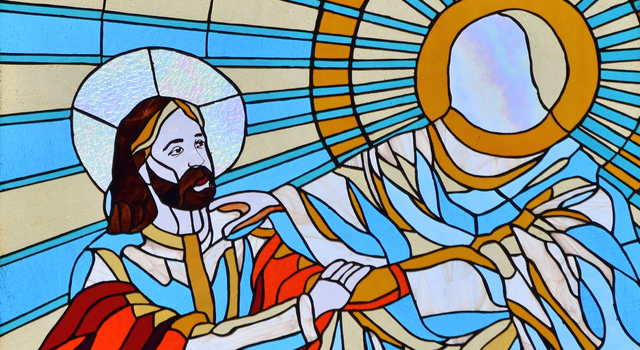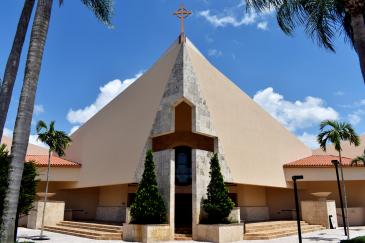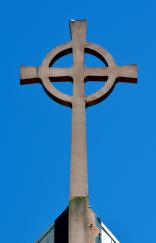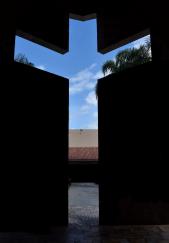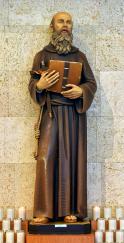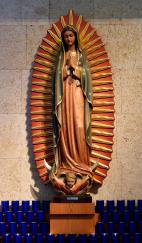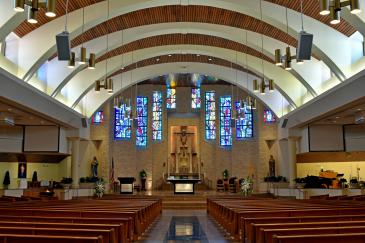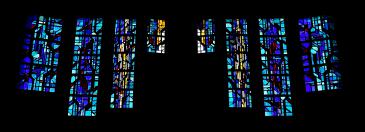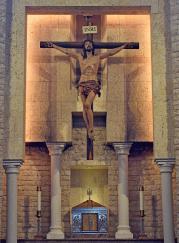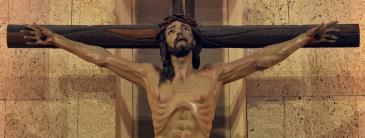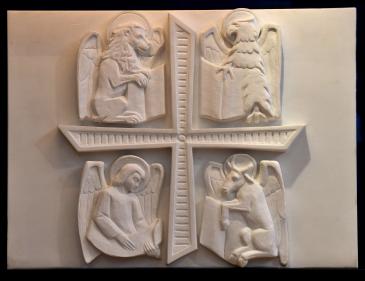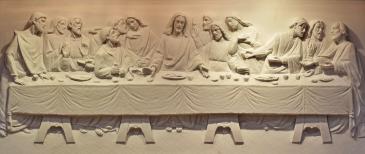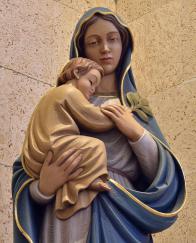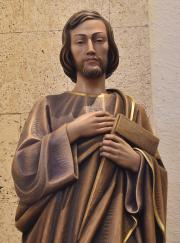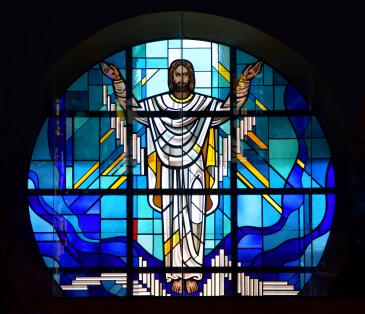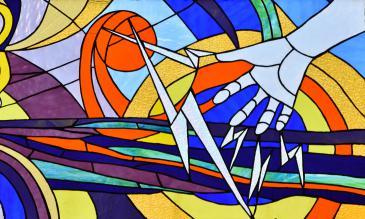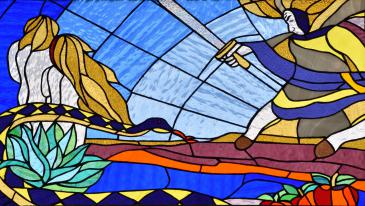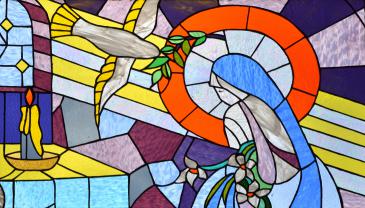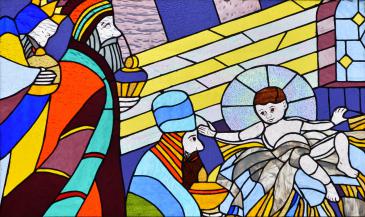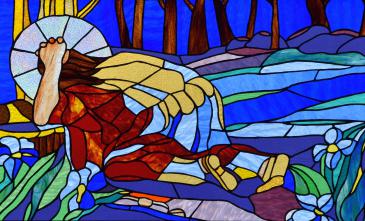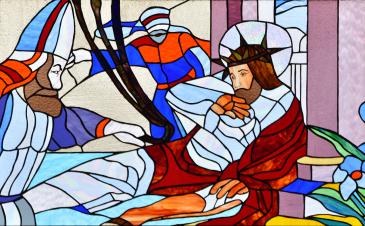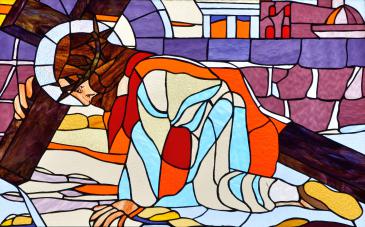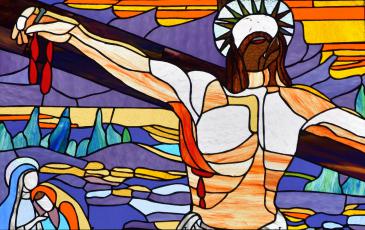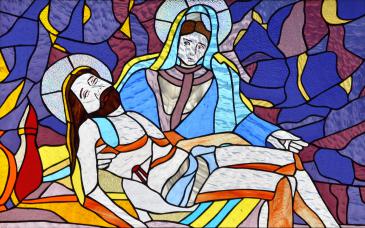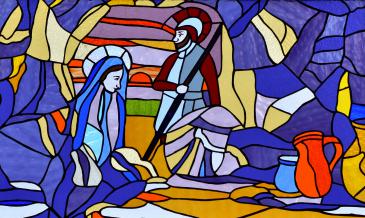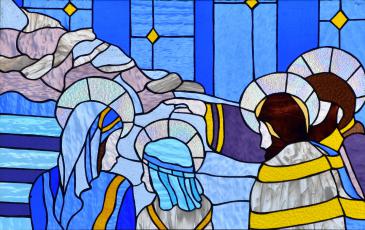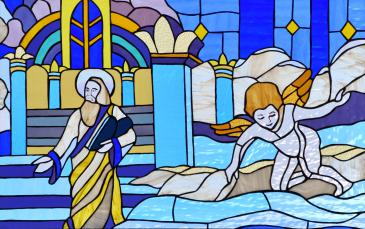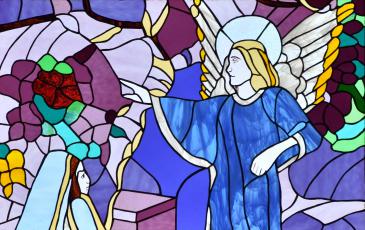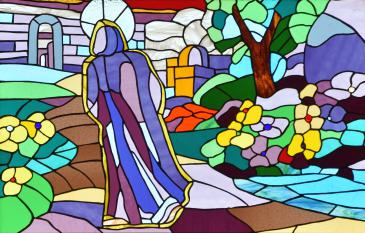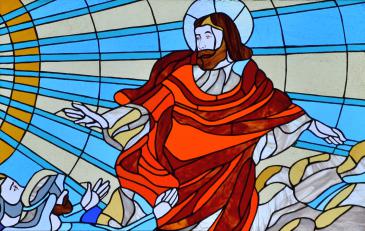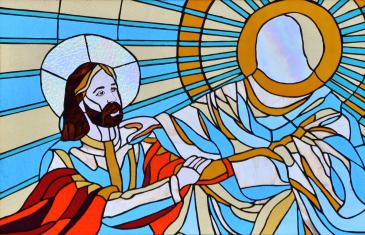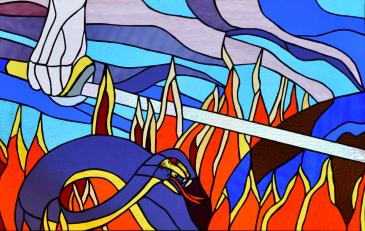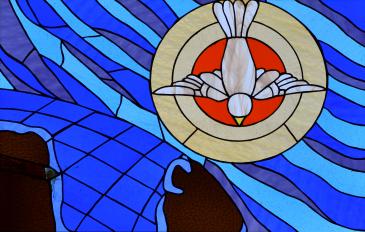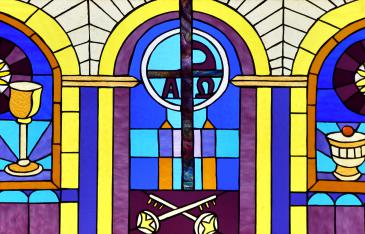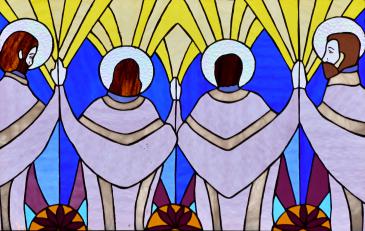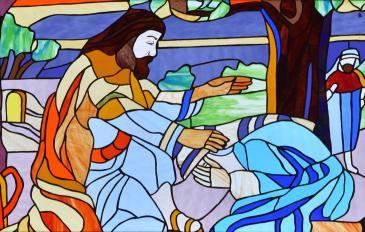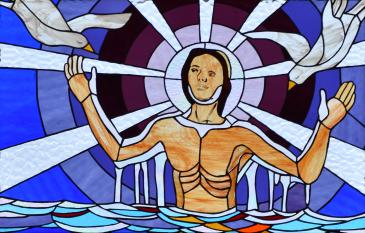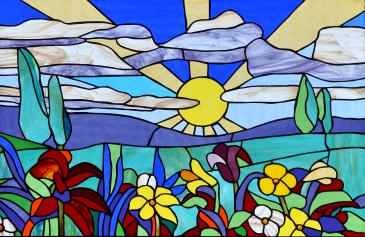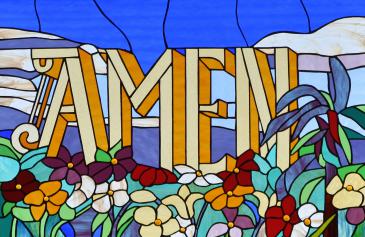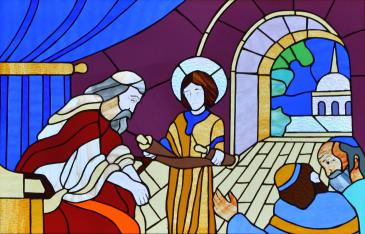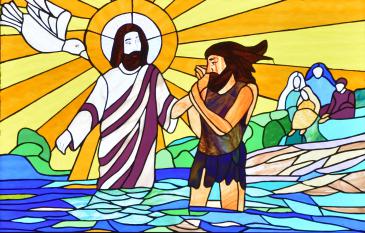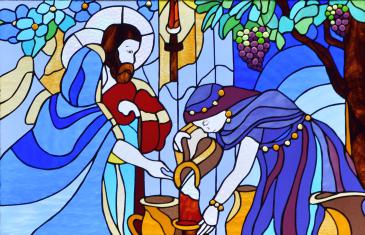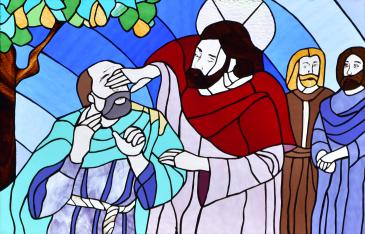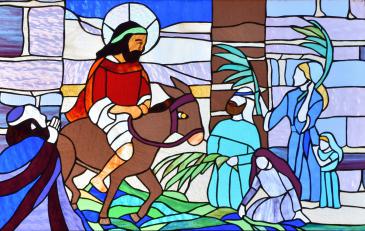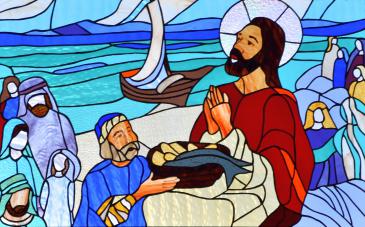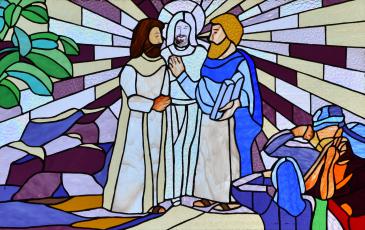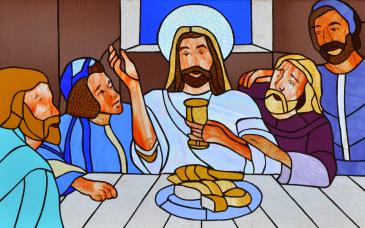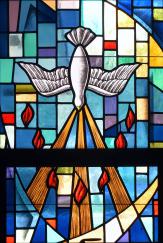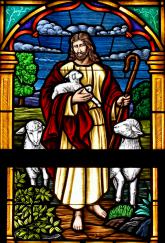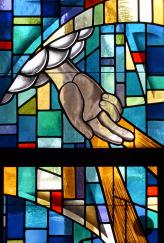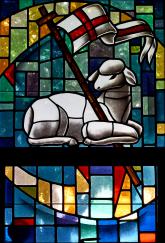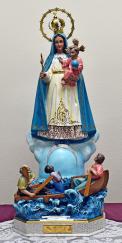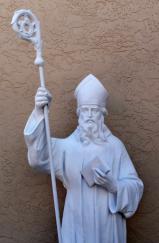By Jim Davis - Florida Catholic
Photography: Jim Davis
DAVIE | What kind of man would get nicknamed “The Seraphic Doctor”?
Someone who could bridge theology and philosophy, ideas and everyday life. Someone who could rescue a religious order from tearing itself apart. Someone who seemed to direct nearly every word and deed toward loving his Creator.
Such is the image of St. Bonaventure that emerges through those who knew him, as well as those who studied his life and teachings. He was honored as a major scholar of the 13th century, plus an able Franciscan administrator and advisor to leaders.
In the medieval effort to bridge faith and culture, “Bonaventure stands out, a man of action and contemplation, of profound piety and prudent government,” Pope Benedict XVI taught in 2010, according to Catholic News Agency. He urged everyone to emulate Bonaventure’s Christ-centered life.
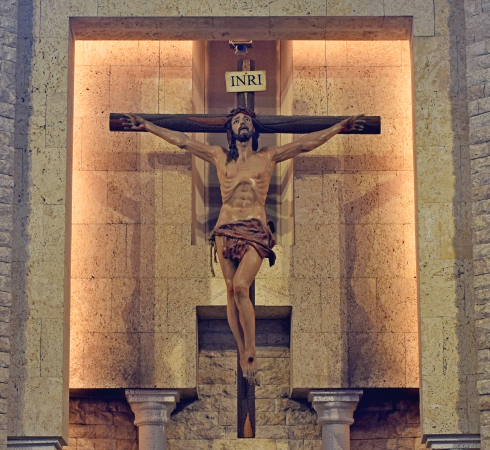
Photographer: Jim Davis | FC
Main crucifix is made of Spanish juniper and Brazilian mahogany, created by sculptor Jesús Curquejo-Murillo of Sevilla, Spain.
The future leader of the Franciscan order was born in 1221 in Bagnoregio, in central Italy. He was baptized Giovanni but was renamed, according to a legend, after surviving a childhood illness.
As the story goes, his mother asked St. Francis of Assisi to pray for the boy. The famous monk reportedly had a vision of the boy’s future greatness and exclaimed, “O buona ventura,” or “O good fortune!”
The renamed Bonaventure became a Franciscan at the age of 22, then finished his studies at the University of Paris. There, he earned a doctorate about the same time as the great St. Thomas Aquinas, and the two became close friends.
Bonaventure taught at the university and preached in Paris for years; but his life changed abruptly at 35, when he was chosen minister general of the Franciscans. And it was no honorific position: His fellow friars were divided about such issues as whether to follow Francis’ example of simplicity and poverty, or to add intellectual efforts as well.
He tamed the quarrels by setting new rules and teaching the centrality of Christ both in spirituality and daily life. He also wrote a heavily researched biography of Francis, making it the order’s official account of the man's life. His marriage of holiness and theology is one of his largest contributions.
“Every subject he treats is made ultimately to converge upon God,” marvels the entry on Bonaventure in the authoritative Catholic Encyclopedia. “This abiding sense of God’s presence which pervades all the writings of Bonaventure is perhaps their fundamental attribute.”
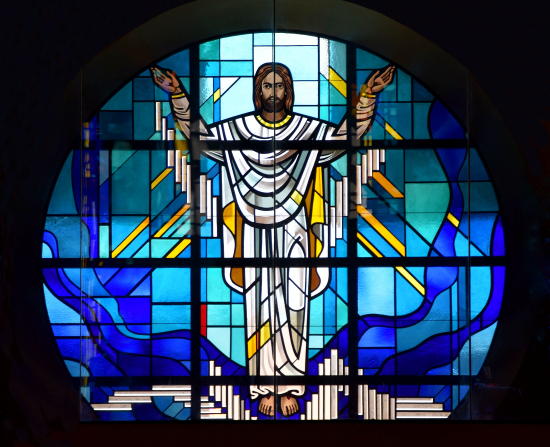
Photographer: Jim Davis | FC
Rose window at St. Bonaventure shows a white-clad risen Christ. He is surrounded by water, symbolizing baptism and new life.
He taught and preached in France, Spain, Italy and Germany. His wisdom earned him a place as a friend and advisor to St. Louis IX, king of France. They also caught the eye of Pope Clement IV, who sought to make Bonaventure archbishop of York, England.
Bonaventure somehow begged off that appointment, but reluctantly accepted one from the next pope, Gregory X: the title of cardinal and bishop of Albano, a few miles southeast of Rome. Even then, he emphasized his humility: It’s said that when the pope’s envoys brought his cardinal’s hat, Bonaventure told them to hang it on a tree until he was finished washing dishes.
Bonaventure’s final duty was to help plan and convene the Council of Lyons, which dealt with matters such as reforming Catholic morality and mending relations with the Greek Church. But he died suddenly in 1274 – by poisoning, according to his secretary. The date of Bonaventure’s passing, July 15, has become his feast day.
Gregory so mourned Bonaventure’s death that he urged all priests worldwide to say Mass for his soul. Bonaventure was declared a saint in 1482 and named a Doctor of the Church – a prime source for Catholic teaching – in 1557.
Along with St. Thomas Aquinas, he is regarded as among the greatest teachers of his time.
“Thomas enlightened the mind, Bonaventure inflamed the heart; Thomas extended the Kingdom of God by the love of theology, Bonaventure by the theology of love,” says the Catholic Encyclopedia.
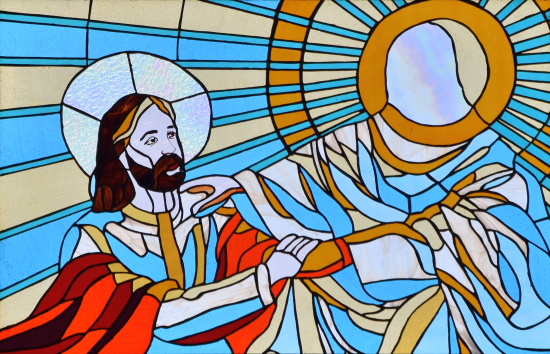
Photographer: Jim Davis | FC
... to be "seated at the right hand of the Father."
In Davie, St. Bonaventure Church was established in 1985, with Father Edmond Prendergast, a native of County Tipperary, Ireland, as pastor – a position he still holds. He began saying daily Mass at his rectory, with weekend Mass at a local elementary school.
Attendance mushroomed, with 50 at the Saturday vigil Mass and another 150 on Sunday morning. They soon began raising funds for their new home, with the likes of garage sales and spaghetti dinners.
Members served as lectors, ushers and Eucharistic ministers. They also fostered outreaches like religious education, Respect Life, the Legion of Mary and a St. Vincent De Paul Society.
A parish center opened in 1989, adding a series of stained-glass windows on the 10th anniversary. The windows, illustrating the Apostles’ Creed, were made by about 40 parishioners. They designed the pictures, built a workshop and learned the skills of cutting and setting the panes.
Finally, St. Bonaventure Church got its current, 1,500-seat home in 2004, and the Apostles’ Creed windows were moved there.
The 31,000-square-foot church has walls of coral and Jerusalem stone, with an arching ceiling. The design pushed internal columns to the corners to allow everyone a clear view, according to Father Prendergast, who helped plan the structure.
The two main Christ images complement each other. Behind the altar, the crucifix gives Jesus a victorious look as he yields his spirit to God. The rose window shows him resurrected and robed in white.
Editor's note: Previous articles have said the windows at St. Bonaventure illustrate the Nicene Creed. The windows actually illustrate the Apostles’ Creed.
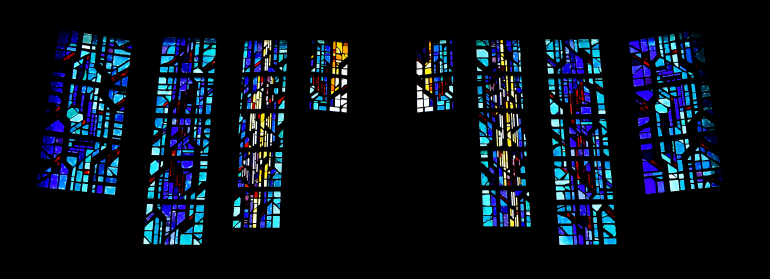
Photographer: Jim Davis | FC
Faceted glass windows behind the chancel at St. Bonaventure stand for the Eucharist: red, for the blood of Christ; yellow, for the wheat made into bread; and white, for the host of Holy Communion.
